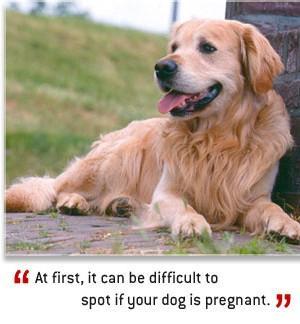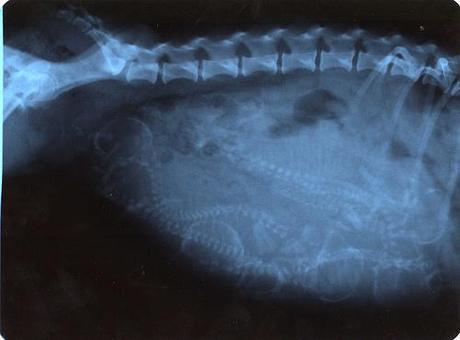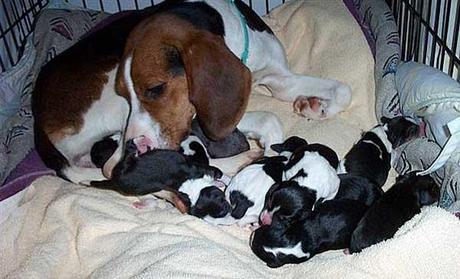
Just like with human birth, a dog birth is somewhat an awe-inspiring and miraculous thing. The gestation period in dogs is nine weeks (approximately 63 days). Movement of the fetuses can be felt from the seventh week of pregnancy.
Check out How To Take Care of Pregnant Dog.
As the birth nears, the female dog will begin to “nest” and seek a private, preferably dark, safe place in which to give birth.
Pregnancy NestingPregnant dogs build nests out of instinct, because in the wild, they would need a safe and private area where they can give birth and raise the puppies while they’re small, vulnerable and dependent. Generally, this isn’t a particularly complex area — just someplace relatively dark, enclosed and warm. They need the privacy because they and their pups are vulnerable to predators, and because the puppies need shelter from the elements. - source

- image source
Stages of Labor
Once first-stage labor starts, the soon-to-be-mom will pace around restlessly, whining and panting, and look behind her in an agitated and puzzled manner. There will usually be a clear or mucus-like discharge from the vulva and the bitch will spend a good deal of time licking and cleaning herself. She will normally refuse food. The first stage can last for 24 to 48 hours.
As second-stage labor begins, the female dog goes to her nesting place, lies on her side and strains as uterine contractions move the puppies, one at a time, down the birth canal.
After delivering a puppy, the female dog cleans away the birth membrane covering it, thus allowing and stimulating it to breathe. The placenta, joined to the puppy by the umbilical cord, is then passed, and the mom eats it, severing the cord a short way from the puppy’s body.
Once all the puppies are born, the mom will clean herself, then settle down to suckle her babies, curling herself around them, and rest. If she will go outside to relieve herself, it will give you the chance to remove soiled bedding, and also to check visually that all the pups seem healthy and content.

- image source

